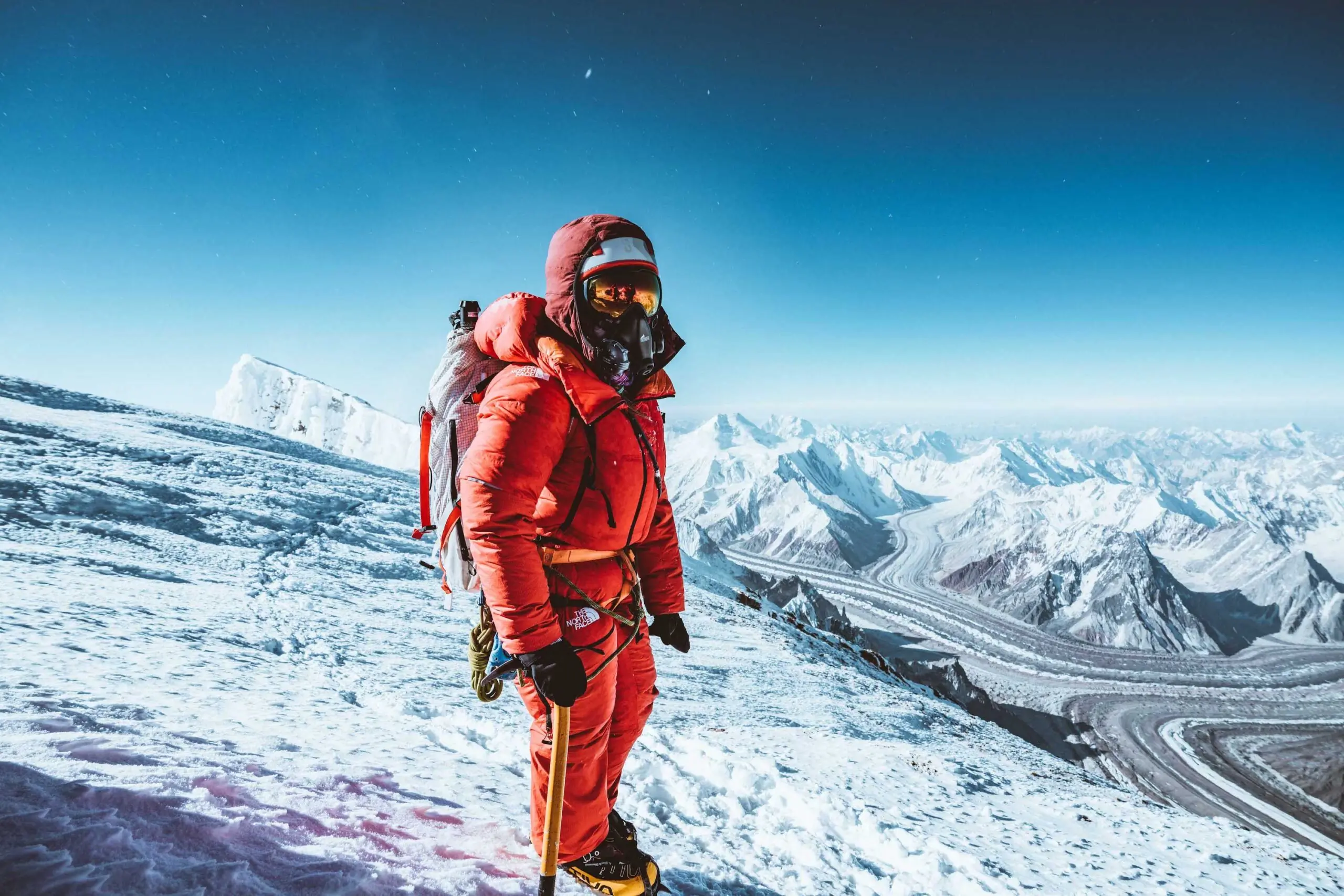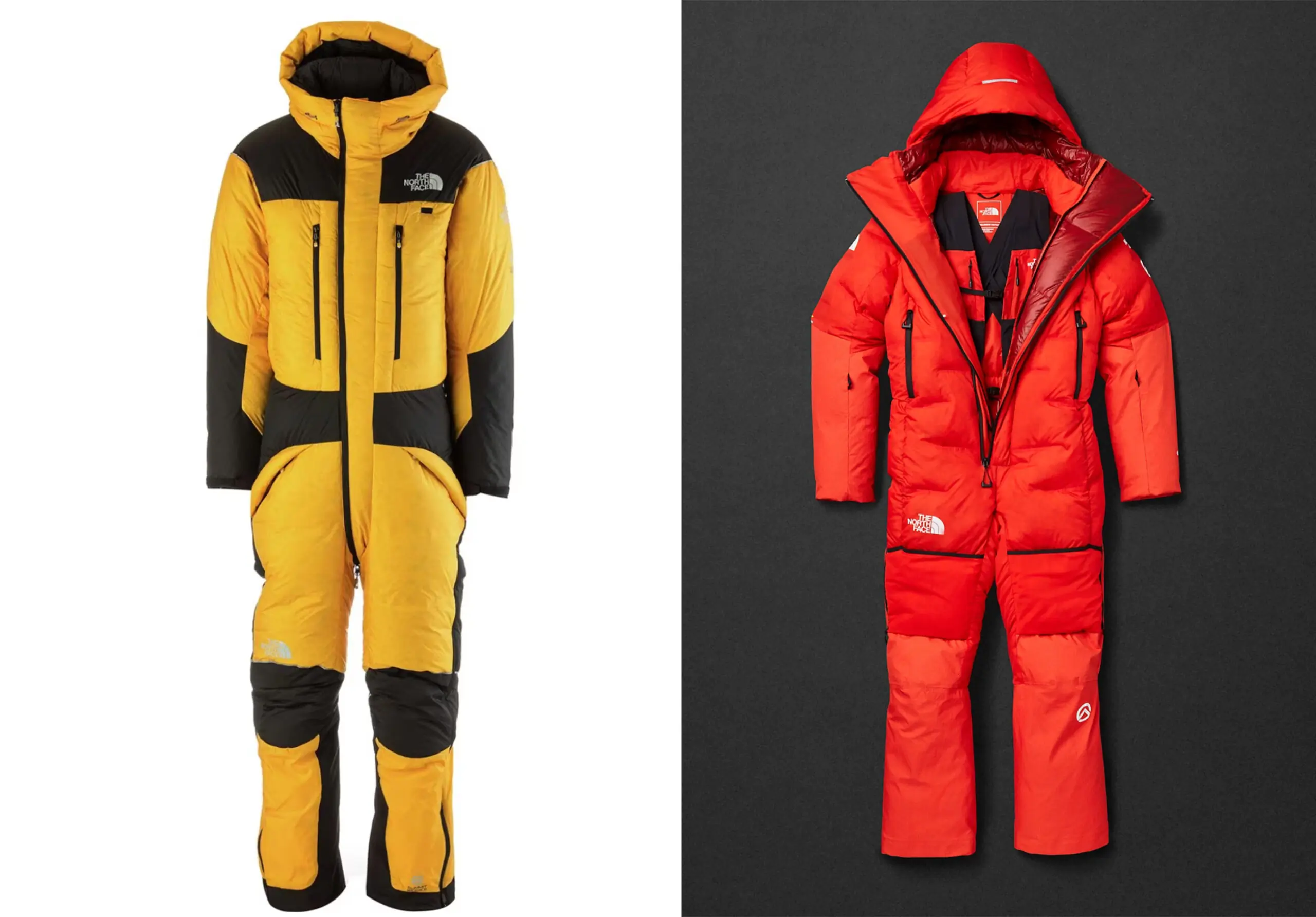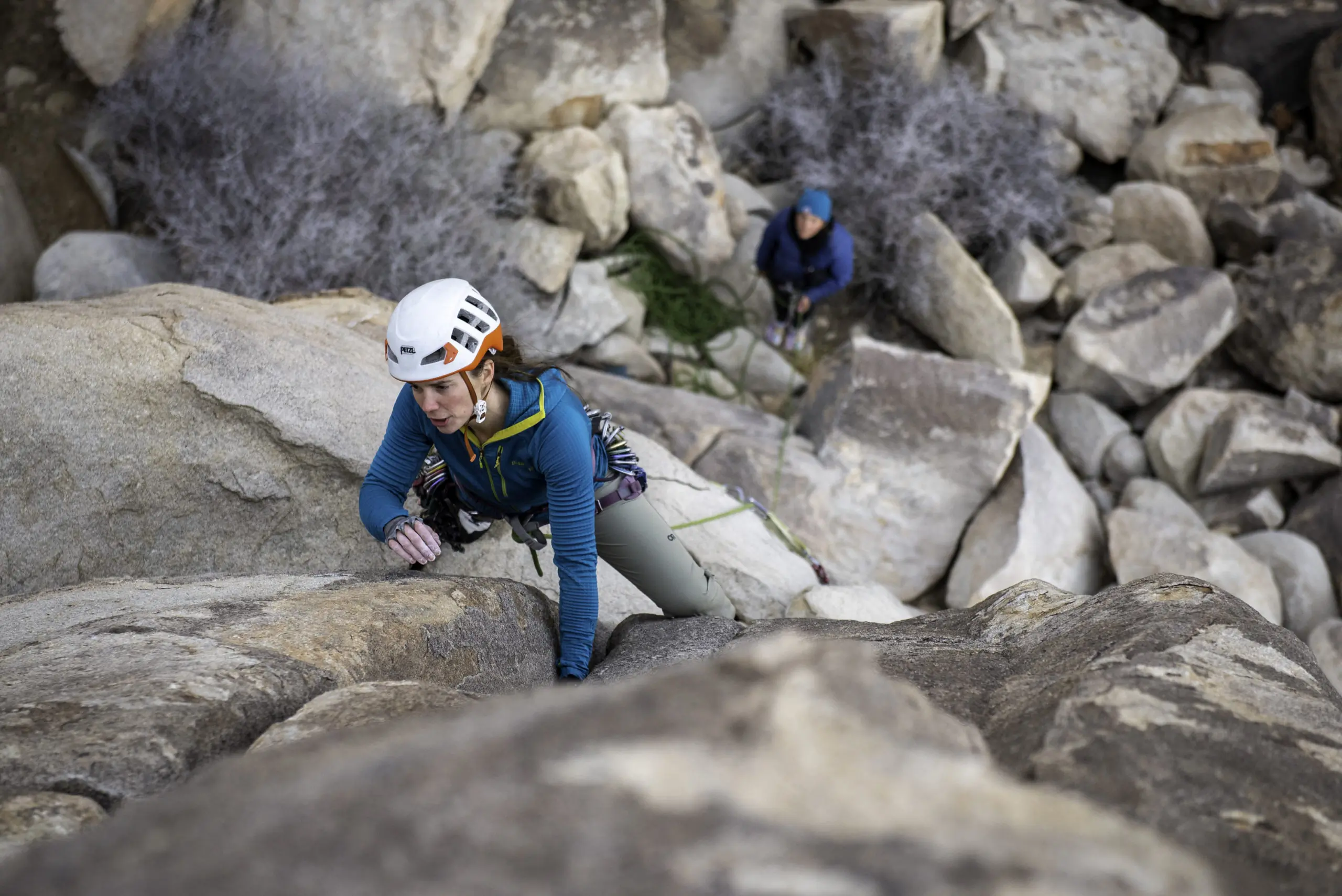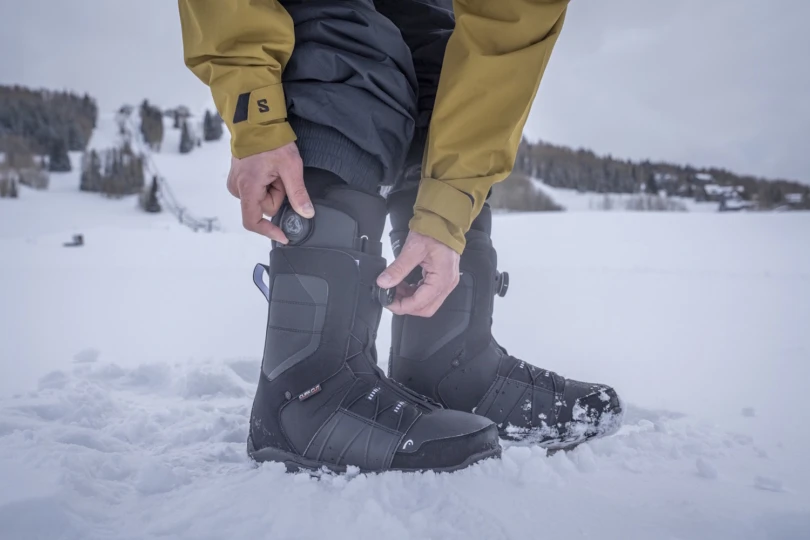First introduced in 1994, The North Face Himalayan Suit has been one of the industry’s most recognized one-piece climbing suits. This North Face’s down suit has been worn by famous athletes like Renan Ozturk, Jimmy Chin, and Conrad Anker. It’s been to the tops of countless peaks.
Of course, it’s not the only mountaineering suit out there.
The North Face Himalayan one-piece suit sits among the ranks of the Rab Expedition 8000 Suit, the Blackyak Watusi Suit, and the Marmot Warmcube 8000M. But what all these mountaineering suits have in common, besides being iconic pieces of apparel, is this: They don’t make a women’s version.
“The unisex idea, while nice for the industry, really just doesn’t always make sense, especially for something like this, and really for the women’s-specific suits,” Senior Design Manager Erica Cottrell said. “It just doesn’t work. When I was told I’d be working on the design for the Him suit, I thought, it’s about time we have one for women. Why aren’t we designing that?”
Well, a couple other female designers on the project and the broader team at The North Face agreed. Now, 30 years after its first suit came to market, The North Face finally introduces the first Women’s Himalayan Suit.
Designing The North Face Himalayan Suit for Women
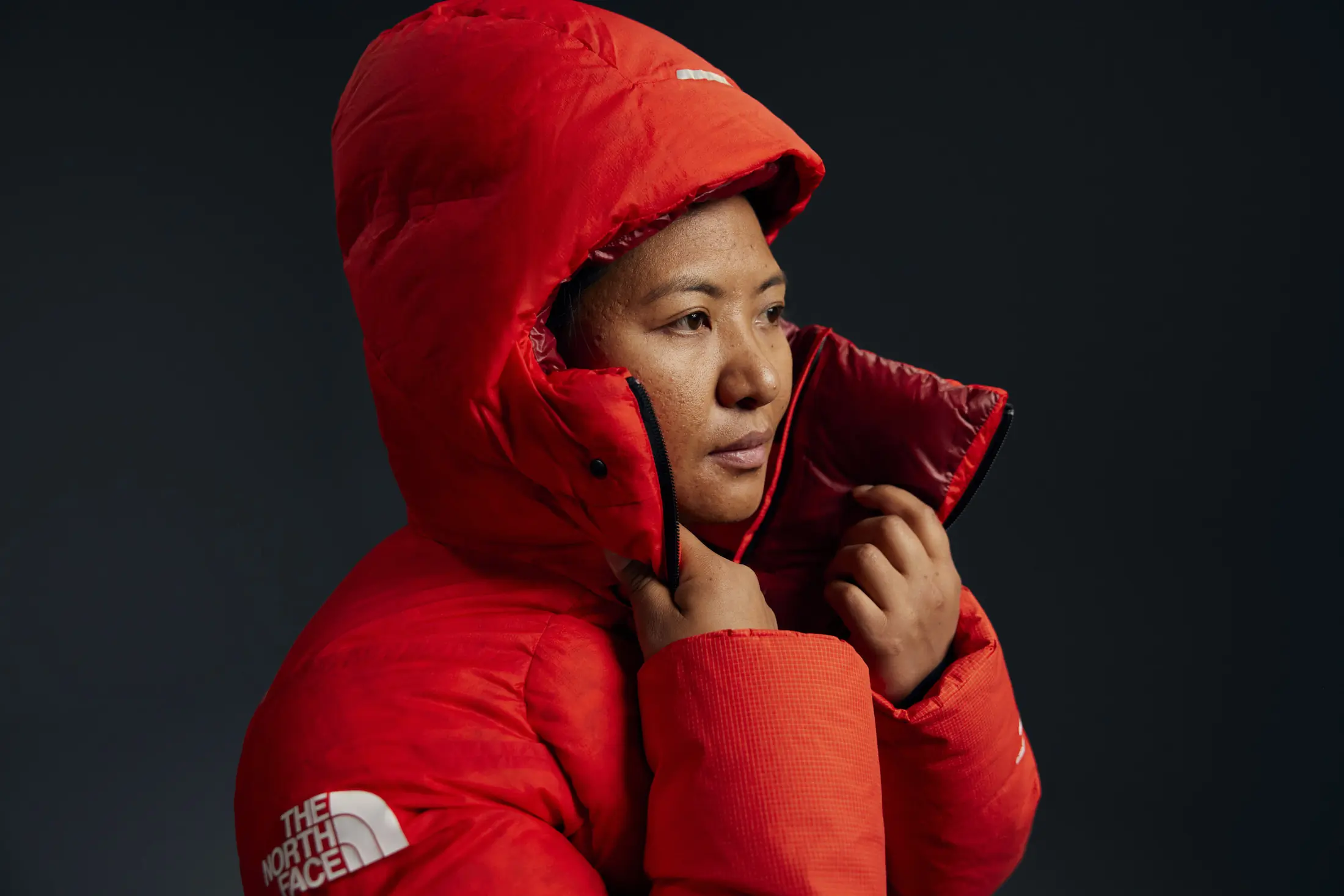
In order to make this happen, The North Face employed a team of women designers and product experts, and assistance, testing, and feedback from its women athletes on The North Face team. “The result is a suit in which women athletes can feel protected and expedition-ready in the harshest weather conditions,” The North Face wrote.
The process for redesigning the suit — both the original and the new women’s one — started back in 2019.
This Himalayan Suit gets a lighter taffeta shell and a lining that is now shaped for thermal efficiency. It’s not as heavy (not nearly as heavy as the first suits years ago). And that’s just a couple updates to the redesigned suit fabrics — before we even get to changes made specifically for the women’s suit.
“Designing The North Face’s first Women’s Himalayan Suit has been a labor of love and commitment to women athletes around the world,” said Erica Cottrell, Senior Design Manager at The North Face. “We worked tirelessly with our women athletes to bring to life the most advanced and innovative suit for women alpinists.”
I hopped on a call with The North Face designer team themselves to get a look at all the tech in this new suit.
A New Design, a Redesign, a New Option
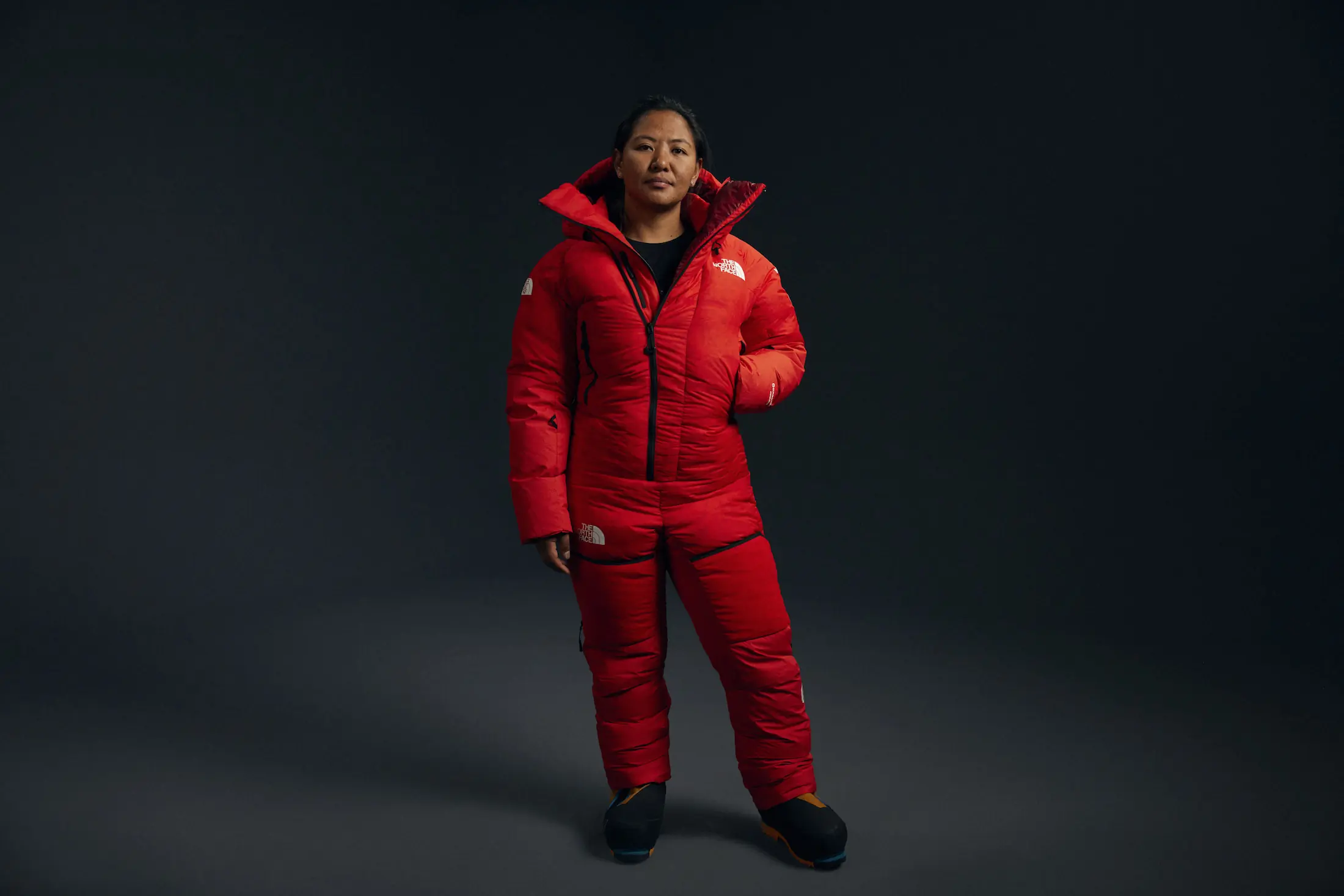
In redesigning the original men’s suit for women, The North Face’s primary goal was to re-engineer the fit and “consider what else women would need for mountain exploration,” Cottrell commented. The suit is built for women’s bodies — with different torso and inseam lengths — and a “reimagined size range.” This means new sizes customized by the designers for this specific product.
The North Face designers also changed the shape and closures of the internal vest, altered the length of the front-access zipper (which you’ll notice is shorter), added a full back zip for easier restroom access on the mountain, and modified the size of the hand pockets.
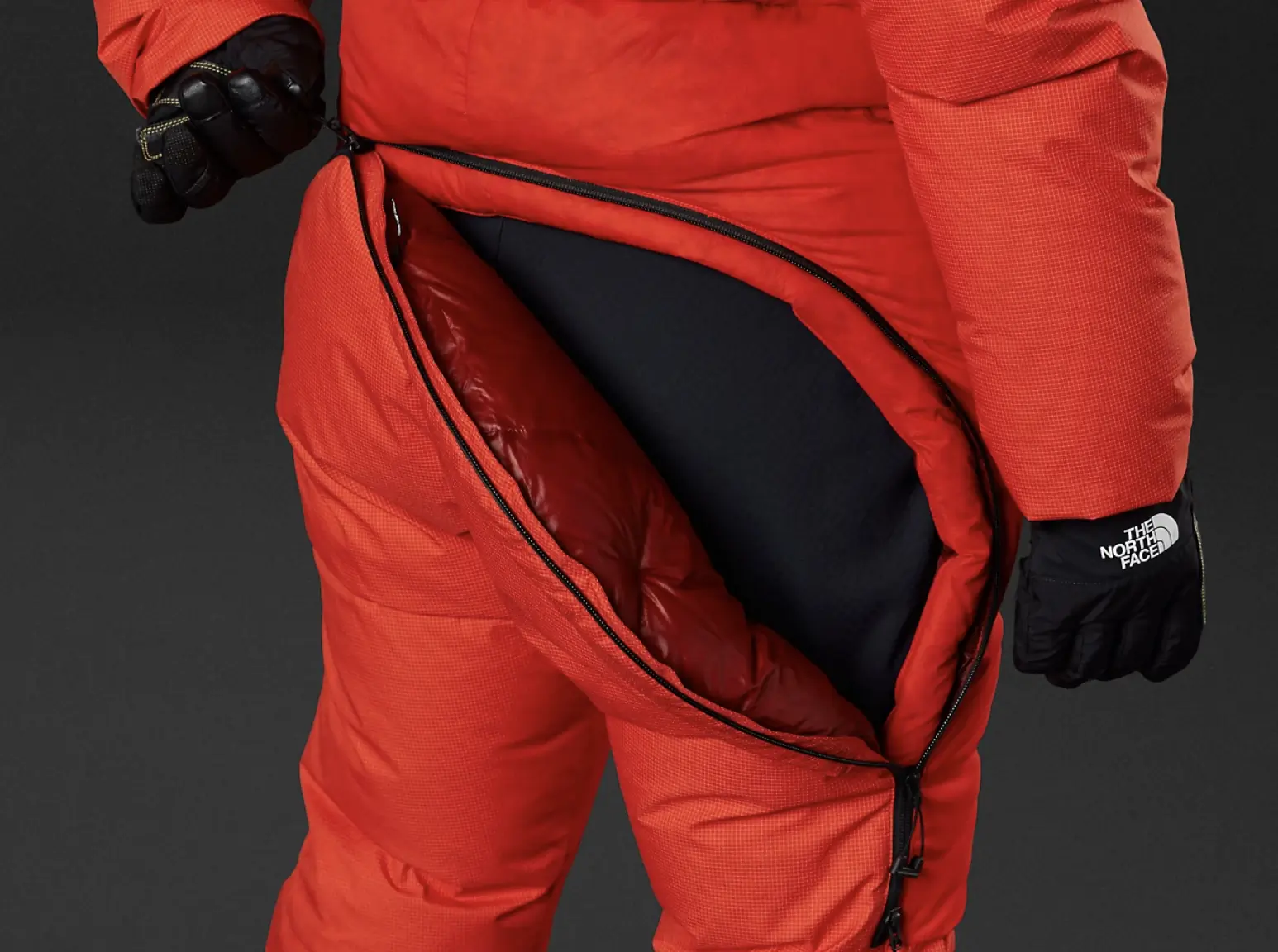



The North Face made a lot of changes here, specifically with women’s performance on the mountain in mind. Warmth, bathroom break considerations, and fit were the really big ones. “We really knew we needed to address fit in the torso, shoulders, but also things like warmth in the butt and legs, moisture and sweat and fit under the breastplate,” Cottrell explained. Synthetic insulation, in addition to down fill, gets added in the lower legs, chest, seat, and thighs for more warmth.
It’s far from the men’s suit and not just trimmed down and slapped with women’s sizes.
“Something like this has to work on the mountain, for men or women,” said Cottrell. So, of course, each element was put to the test by various mountaineering athletes on the North Face team.
The Himalayan Suit: Tested on and Above 8,000m
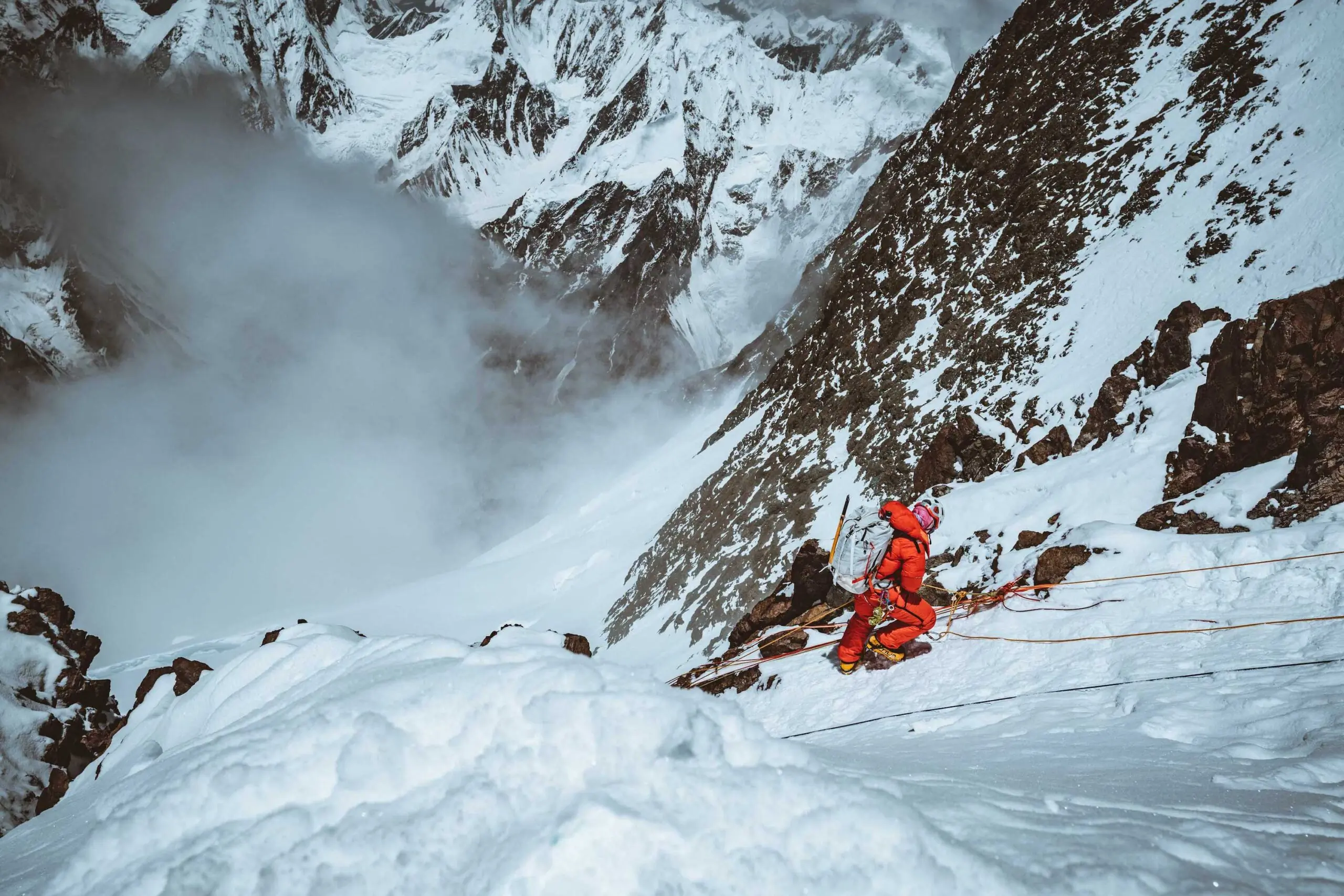



Where do you start when building a bulky, performance-oriented, strategically insulated, down onesie? And how do you go about testing? If you are The North Face in this situation, you recruit help. A lot of it.
I asked how many women were involved in testing, half-expecting not many given the niché-ness of this suit. “It was at least 10 women, outside of the immediate brand and athlete team,” Cottrell said, “And we would ship or send them updates probably on a six-month cadence throughout the whole testing span.” Some were more involved than other athletes, of course, depending on travel, objectives, and testing opportunity.
Laura Atika, Category Manager, and Cottrell also mentioned that The North Face specifically made sure to get feedback from guides to speak to the suit’s use over time, as opposed to just climbers or clients.
Even if it was so much as trying on the suit indoors and squatting or checking the fit in the chest area with a pack on, that counted. Each and every detail went through the testing wringer, and hopefully, for all the female mountaineers out there, it shows.
- Fabric: FUTURELIGHT Shell
- Insulation: 900-fill power PRODOWN insulation with Cloud Down construction.
- Internal: FLASHDRY Internal Vest
- Closure: Asymmetrical Front Zip
- Drop Seat Functionality: Full rainbow zip drop seat with multiple zip pulls for easy access and venting, and even a handle pull.
- Oxygen Mask-Compatible Hood: Fully adjustable for compatibility with helmets and oxygen masks.
- Double-layer lower leg construction allows the outer shell to fit over boots, or under.:
- Reinforced lower arm, seat and lower leg ripstop panels :
- Women's Sizing: XS-2XL
Availability




The Women’s Himalayan Suit, alongside the redesigned men’s Himalayan Suit, will be available in select stores and online starting May 4, 2023. The women’s suit will retail for $2,000 and will be available in the U.S., Canada, Europe, the Middle East, and Asia.
Check Price at The North Face